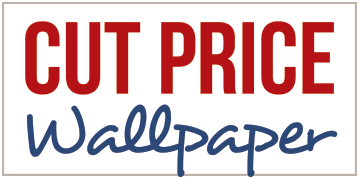Wallpaper Remover: The Ultimate Guide to Effective Wallpaper Removal
Introduction
Removing wallpaper can be a daunting task, but with the right knowledge and tools, it can be done effectively and efficiently. In this comprehensive guide, we will walk you through the entire process of wallpaper removal, from understanding different types of wallpaper to dealing with difficult situations. By following the steps outlined in this guide, you’ll be able to transform your space and prepare it for a fresh new look.
1. Understanding Wallpaper Removal
1.1 Types of Wallpaper
Before you start removing wallpaper, it’s important to understand the type of wallpaper you’re dealing with. There are various types of wallpaper, including vinyl, fabric-backed, and paper-backed. Each type requires a slightly different approach for removal, so it’s essential to identify the type of wallpaper before proceeding.
1.2 Reasons to Remove Wallpaper
There are several reasons why you may want to remove wallpaper. It could be outdated, damaged, or you simply want to change the look of your space. Whatever the reason, removing wallpaper is the first step towards achieving a fresh and updated interior.
2. Tools and Materials
2.1 Essential Tools
To effectively remove wallpaper, you’ll need a few essential tools, including a wallpaper scorer, a wallpaper steamer, a putty knife, and a spray bottle. These tools will help you in the process of loosening and scraping off the wallpaper.
2.2 Additional Materials
In addition to the essential tools, there are a few additional materials that can make the wallpaper removal process easier. These include drop cloths to protect the floor, plastic sheets to cover furniture, and a sponge or soft cloth for cleaning the walls after removal.
3. Preparing the Room
3.1 Clearing the Space
Before you begin removing wallpaper, it’s important to clear the room of any furniture, decorations, or other items that may hinder your progress. This will give you ample space to work and prevent any damage to your belongings.
3.2 Protecting Surfaces
While removing wallpaper, it’s important to protect the surfaces surrounding the wallpapered area. You can use plastic sheets or drop cloths to cover the floor, and tape off any trim, outlets, or switches to avoid damaging them during the removal process.
4. Wallpaper Removal Techniques
4.1 Steam Stripping
Steam stripping is one of the most effective and popular methods for removing wallpaper. Using a wallpaper steamer, you can apply steam to the wallpaper, which will soften the adhesive and make it easier to peel off. This method is particularly useful for vinyl and fabric-backed wallpapers.
4.2 Chemical Solutions
If steam stripping is not suitable for your wallpaper type, you can opt for chemical solutions. There are various wallpaper removal solutions available in the market that can help dissolve the adhesive and make the wallpaper easier to remove. It’s important to follow the manufacturer’s instructions when using these solutions.
4.3 Scoring and Scraping
If the wallpaper is particularly stubborn or has multiple layers, scoring and scraping may be necessary. A wallpaper scorer creates small holes in the wallpaper, allowing the solution or steam to penetrate and loosen the adhesive. Once scored, you can use a putty knife or scraper to gently scrape off the wallpaper.
5. Dealing with Difficult Situations
5.1 Removing Stubborn Adhesives
In some cases, you may encounter stubborn adhesives that are difficult to remove. If this happens, you can try using a stronger wallpaper removal solution or a specialized adhesive remover. It’s important to follow the instructions and take necessary precautions when working with these products.
5.2 Repairing Wall Damage
During the wallpaper removal process, it’s possible to cause minor damage to the walls. This can include small tears or nicks. Before applying a new wallpaper or paint, it’s important to repair these damages. You can use spackling compound or joint compound to fill in any imperfections and sand them smooth.
6. After Wallpaper Removal
6.1 Cleaning the Walls
Once the wallpaper has been successfully removed, it’s important to clean the walls thoroughly. Use a sponge or soft cloth and a mild detergent solution to remove any remaining adhesive residue or dirt from the walls. This will ensure a clean and smooth surface for your next step, whether it’s applying new wallpaper or painting.
6.2 Surface Preparation
After cleaning the walls, it’s time to prepare the surface for your desired finish. If you plan to apply new wallpaper, make sure the walls are completely dry and smooth. If you’re opting for paint, consider priming the walls to create an even base for better paint adhesion. Sand any rough spots and fill in any remaining imperfections before proceeding.
Conclusion
Removing wallpaper can be a time-consuming task, but with the right techniques and tools, you can achieve excellent results. By following the steps outlined in this guide, you’ll be able to effectively remove wallpaper and prepare your walls for a fresh new look. Remember to take your time, be patient, and always prioritize the safety of yourself and your surroundings. For high-quality wallpapers, visit Cut Price Wallpaper.

